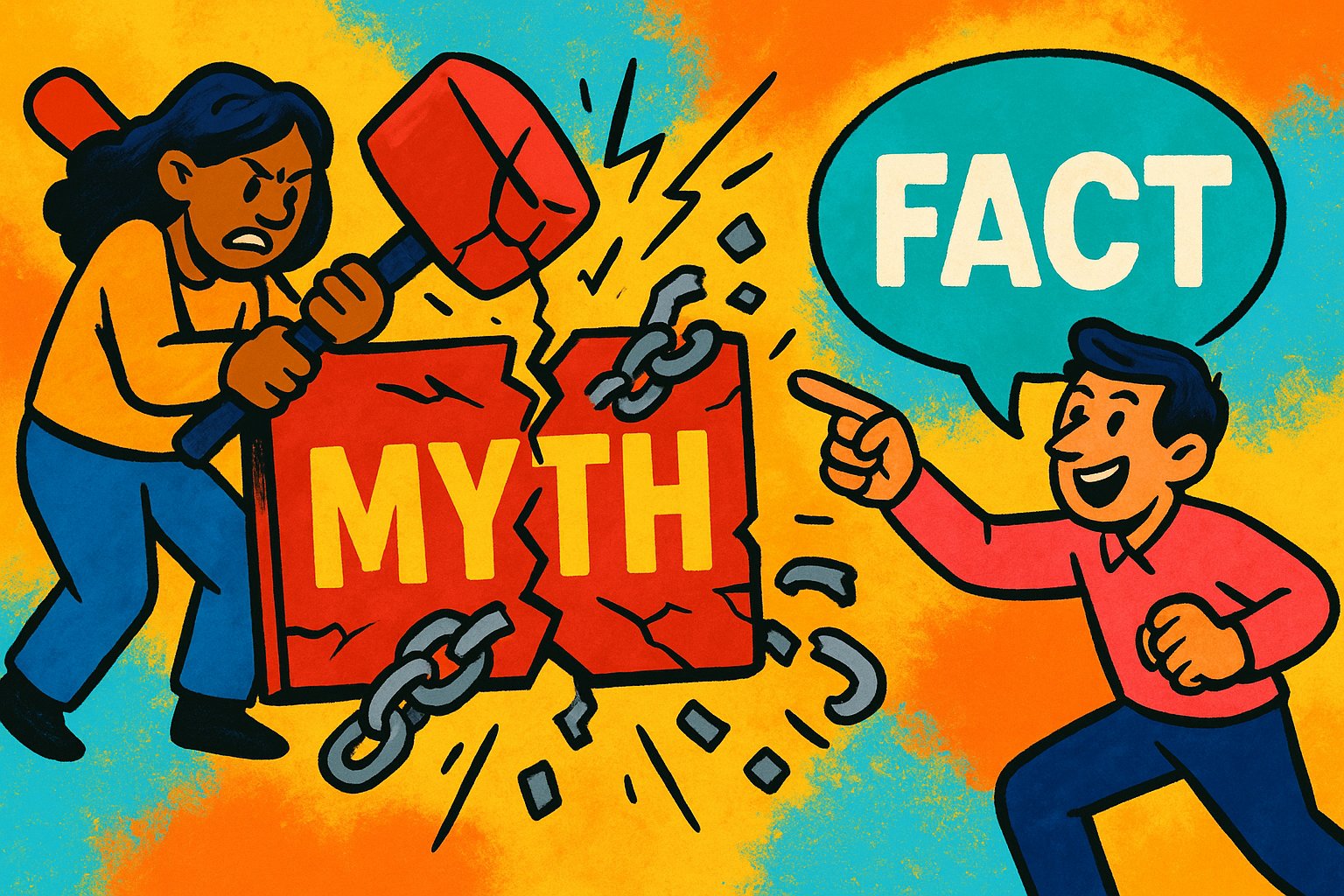Charting Your Kickstarter Journey: The Power of Strategic Goals
Launching a Kickstarter campaign is more than sharing an idea—it’s orchestrating a journey that moves from concept to community. Your funding goal becomes the axis around which every decision pivots: it dictates whether prototypes transform into polished products, determines production timelines, and influences backer trust. Set it too low, and you risk undercapitalizing essential expenses like manufacturing, shipping, and marketing. Set it too high, and potential supporters may view your ask as unattainable, eroding early momentum. The stakes are amplified by Kickstarter’s all-or-nothing model: backers know their cards are charged only if you meet or exceed your goal, making every pledge a collective vote of confidence. Hitting that threshold not only unlocks the capital you need but also signals legitimacy—often triggering algorithmic boosts, editorial features, and spilled enthusiasm across social feeds.
Yet the path from setting a goal to crossing the finish line is fraught with nuance. It requires a delicate blend of meticulous cost analysis, category-specific benchmarking, and an understanding of backer psychology. No two categories are identical: board games live in a different ecosystem than wearable tech, and creative arts campaigns follow distinct norms from hardware projects. Furthermore, crafting stretch goals that excite without overpromising demands foresight and operational rigor. In this guide, we’ll explore how to construct funding goals that resonate with backers, account for real-world expenses, align with category trends, and foster sustainable momentum. By weaving together data-driven planning with inspirational storytelling, your Kickstarter campaign becomes not just a fundraising vehicle but a rallying cry that transforms interested supporters into devoted advocates.
Decoding All-or-Nothing and Anchoring Goals in Real Costs
At the heart of Kickstarter’s model is a psychological contract: backers pledge only when they believe the project can reach its funding goal. If the goal isn’t met, all pledges are returned, ensuring supporters avoid funding under-resourced ideas. This all-or-nothing mechanic magnifies urgency—each pledge moves the needle, and backers become de facto cheerleaders, sharing your campaign to ensure it crosses the finish line. Research shows that projects hitting 30% of their goal within the first week enjoy an 80% chance of ultimate success, as that early traction often unlocks algorithmic amplification and editorial curation. However, the flip side is equally stark: campaigns falling short by even a small margin collect zero funds, underscoring why goal precision is non-negotiable.
Anchoring your goal in real costs begins with a comprehensive cost analysis. List every expense—prototyping, tooling, manufacturing, quality control, packaging, domestic and international shipping, customs fees, customer support, and marketing budgets (including video production and influencer partnerships). Don’t overlook Kickstarter’s 5% platform fee and payment processing fees (around 3% plus a fixed fee per transaction). Convert bulk costs to per-unit estimates: for instance, if manufacturing 1,000 units costs $10,000, you have a $10 per-unit cost. Shipping might average $5 domestically and $15 internationally; modeling your expected geographical distribution yields a blended shipping cost. Marketing spend—say, $5,000 for social ads—must be integrated into your budget. Add a 10–15% buffer to cover unexpected delays or material cost hikes. Summing these line items provides your baseline production budget. Divide by your anticipated average pledge—if $50 yields a target of 1,000 backers to hit $50,000—adjusting for the fact that 10–15% of pledges may come from low-tier supporters who pledge solely to show enthusiasm. With these calculations in hand, your Kickstarter goal transcends guesswork, anchoring in the operational reality you’ll face once funding closes.
Benchmarking Category Norms and Crafting Realistic (and Stretch) Goals
Cost analysis sets your baseline, but context cements feasibility. Every Kickstarter category operates within its own ecosystem, with varying norms around funding thresholds, backer counts, and average pledge values. If you’re launching a board game enriched with miniatures and custom artwork, survey recent tabletop campaigns to see how they fared: Did they raise $50,000 with 1,000 backers pledging an average of $50, or did they secure $100,000 with 3,000 backers at $33 each? Tabletop successes often enjoy 40–50% success rates because backers perceive lower production risk and cherish early access. Creative arts campaigns—comics, short films, music albums—typically seek $10,000 to $20,000, leveraging emotional narratives and collector’s perks (signed prints, VIP screenings) to entice pledges between $20 and $40. Conversely, hardware and technology projects require heftier budgets—often six figures—to cover tooling, compliance, and mass production, facing success rates closer to 25%. These benchmarks help validate whether your baseline goal aligns with what backers in your niche have historically funded.
With benchmarks established, craft a primary goal that reflects the absolute minimum funds needed to deliver a quality product, then outline stretch goals that unlock added features or enhancements. Suppose your baseline is $50,000 to produce a basic device; your first stretch goal at $75,000 might upgrade the device’s finish or add an extended warranty. A $100,000 milestone could fund premium accessories or variant color options. Crucially, each stretch goal must come with its own cost breakdown: if the added premium finish costs $5 per unit, calculate the incremental manufacturing expense for each backer, ensuring you can deliver without derailing timelines. Present these goals sequentially on your campaign page: “At $75,000, we’ll include a free high-grade aluminum case for every $50 backer. At $100,000, we’ll produce two new color variants with metallic inlays.” This approach transforms stretch goals into shared milestones rather than arbitrary figures, inviting backers to participate in a journey of tangible upgrades. By benchmarking against category data and layering in cost-conscious stretch plans, you craft a funding roadmap that balances ambition with operational feasibility.
Pre-Launch Tactics: Building a Core Community and Generating Buzz
A well-structured funding goal falters without a robust pre-launch strategy. The first 48 hours of your campaign often determine whether you’ll hit that 30% benchmark critical for algorithmic momentum. Start by cultivating an email list of at least 1,000 highly targeted contacts—friends, family, existing customers, niche forum members, and early enthusiasts who align with your project’s theme. Offer pre-launch incentives to build this list: exclusive behind-the-scenes videos, early-bird reward codes, or invitations to a prototype showcase. Use lead magnets—such as a downloadable PDF outlining your design process or a sneak-peek GIF of your prototype—to entice signups. Regularly engage this list with progress updates, design revisions, and personal anecdotes that humanize your journey.
Simultaneously, forge partnerships with relevant influencers, bloggers, and press outlets. If you’re unveiling a tech gadget, reach out to tech YouTubers, industry thought leaders on LinkedIn, and specialized subreddits, offering prototype samples for hands-on reviews. For creative projects—say, an independent film—connect with local film festival organizers, film critics, and online screening clubs, arranging exclusive watch parties or Q&A sessions. Secure at least two to three media features timed to publish on launch day, generating concurrent traffic spikes. Leverage social media platforms—Instagram, TikTok, Twitter—running teaser campaigns that highlight product benefits, early test footage, and backer testimonials. Implement small-scale targeted ads to lookalike audiences mirroring your core demographic, refining creative messaging based on click-through and engagement metrics. By synchronizing these pre-launch activities—email engagement, influencer outreach, press coverage, and teaser ads—you prime the pump for a surge of initial backers, ensuring you approach launch day with a strong foundation of community enthusiasm.
Launch Day and Mid-Campaign Execution: Igniting and Sustaining Momentum
When launch day arrives, precision execution is paramount. Your Kickstarter page must be fully optimized: a compelling video that hooks in the first five seconds, a succinct headline that conveys your project’s core value, and an eye-catching header image that articulates your brand identity. Place your funding goal and progress bar prominently near the top to showcase early momentum whenever pledges arrive. At launch, immediately notify your pre-launch email list, encouraging supporters to pledge within the first hour. Early backers not only provide initial funds but also generate social proof that attracts additional traffic. Simultaneously, deploy scheduled press features and influencer posts—coordinate with partners to share their content linking back to your campaign within the first 24 hours. Use Kickstarter’s “Update” feature to post a heartfelt thank-you video for your first 50 backers, sharing photos of prototypes in production and reiterating key milestones.
After the initial surge, campaigns often experience a natural plateau around days five to ten. To navigate this mid-campaign valley, monitor real-time metrics: pledge velocity (percentage of goal raised per day), referral sources (traffic from social, email, search, or external blogs), conversion rates (page views to pledges), and reward-tier distribution (which tiers attract the most backing). If pledge velocity dips below 2–3% of your goal daily, identify the culprit. Are your ads still reaching the right audience? Does your campaign page lack fresh emotional resonance? Consider introducing a limited-time “flash stretch goal” anchored to a percentage milestone—“If we reach 60% by midnight, every $50 backer gets an exclusive art print.” Host a live Q&A session on relevant channels—YouTube Live, Reddit AMA, or Instagram Live—demonstrating prototypes, answering backer questions, and soliciting real-time feedback. It revitalizes community engagement and invites hesitant visitors to contribute. If referral data shows a particular blog or social channel performing well, allocate your remaining ad budget to amplify that channel or negotiate additional features. Continuously update your backers: share behind-the-scenes photos of manufacturing trials, outline production milestones, and spotlight testimonials from early testers. By blending aggressive launch-day tactics with adaptive mid-campaign optimization—refreshing ads, unveiling surprise incentives, and engaging the community in evolving dialogues—you maintain a campaign that feels dynamic and alive rather than dormant.
Post-Campaign Momentum: Transforming Funding Success into Sustainable Growth
Crossing your funding goal and smashing stretch metrics deserves celebration, but the real work begins in post-campaign execution. First, focus on fulfillment: confirm final headcounts, finalize manufacturing schedules with suppliers, and provide backers with a detailed production and shipping timeline. Transparency is essential; share high-resolution photos of prototypes moving into mass production, provide weekly progress updates, and address any delays truthfully. Backer trust hinges on your communication cadence—silence breeds skepticism, while proactive transparency fosters goodwill even when issues arise. Leverage Kickstarter’s “Update” system to post video walkthroughs of the assembly line or behind-the-scenes tours of your paint-finish lab. Include expected shipping windows so backers can plan and adjust their expectations accordingly.
Simultaneously, capitalize on your newfound community to transition into additional revenue channels. Many creators launch a post-campaign pre-order storefront—using Shopify, WooCommerce, or similar e-commerce platforms—to capture pre-orders from backers who missed the campaign or latecomers drawn by word-of-mouth. Offer exclusive “campaign only” bundles for a limited window, incentivizing immediate purchases and fostering FOMO. Encourage backers to post unboxing videos, write reviews, and share social media glimpses of their rewards, amplifying organic referrals. If your project resonated within niche communities—such as eco-enthusiasts or tabletop gaming circles—explore partnerships with specialty retailers or licensing deals that extend your reach. Gather post-fulfillment feedback through surveys, asking backers about packaging experience, product functionality, and ideas for future expansions. Use these insights to refine your roadmap, design accessory lines, or even plan sequel campaigns. By treating post-campaign as a launchpad rather than a finish line, you convert one-time pledges into enduring brand loyalty, laying the groundwork for sustained enterprise growth.
Cultivating a Culture of Continuous Improvement and Long-Term Impact
The story of setting and achieving Kickstarter funding goals encompasses more than a singular campaign—it’s a journey of continuous learning and evolution. After fulfillment, conduct a rigorous post-mortem: analyze which reward tiers attracted the most backers, identify which marketing channels yielded the highest conversion rates, and measure your actual expenditure against projections. Celebrate successes—perhaps your early-bird tiers sold out within hours, or a particular influencer drive delivered 30% of total pledges. Equally, acknowledge challenges—did shipping delays arise due to underestimated customs fees or did a stretch goal prove more expensive to implement than anticipated? Document every insight in a living playbook: templates of successful video scripts, donor engagement email sequences, refined backer personas, and a repository of contact information for reliable suppliers or media partners. Share portions of this playbook with your core backer community through a private forum or newsletter, inviting feedback and building a co-creative advisory panel for future projects.
As you gear up for the next Kickstarter journey—or pivot to follow-on product launches—leverage these accumulated lessons. Implement A/B tests for new reward-tier structures, experiment with alternate stretch-goal incentives, and refine ad targeting based on past performance data. Stay transparent with your backers: maintain an open dialogue about upcoming prototypes, production timelines, and shipping policies. Cultivate a loyal brand ambassador network by offering exclusive “insider” perks—early access beta tests, virtual meet-and-greets with the design team, or co-creation workshops that allow top backers to shape product evolution. Crowdfunding is not merely a transactional platform; it’s a crucible for refining your product-market fit, honing your storytelling acumen, and building a community that champions your vision. By embedding a culture of continuous improvement—where each campaign fuels insights for the next—you transcend one-off successes, forging a lasting creative enterprise that resonates with backers and stakeholders alike.
In the end, your funding goal is more than a dollar amount. It’s a strategic architecture that aligns community aspirations, financial viability, and production realities. When crafted carefully and executed thoughtfully, it becomes the foundation upon which transformative projects are built—transforming ideas into tangible products, forges lasting bonds with backers, and catalyzes a cycle of innovation that extends far beyond the campaign itself.




